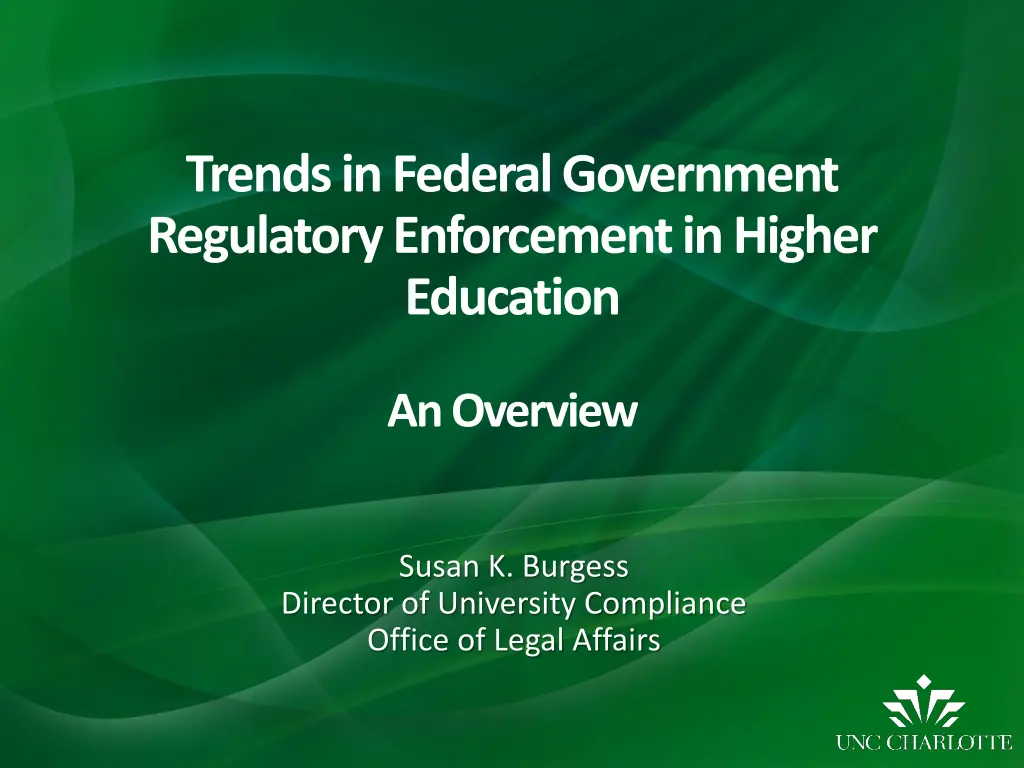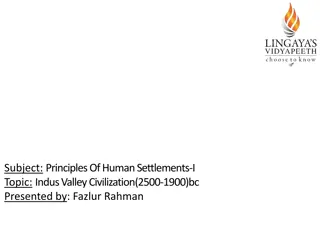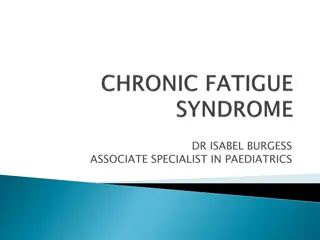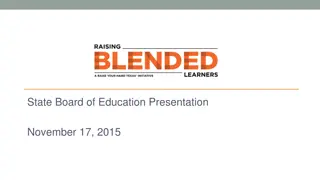
Federal Government Regulatory Enforcement Trends in Higher Education
Explore the trends in federal government regulatory enforcement in higher education, including program participation agreements, terms and conditions for compliance, agency enforcement mechanisms, and other enforcement agencies. Learn about the key regulations, such as Title VI of the Civil Rights Act and the Age Discrimination Act, that institutions must adhere to in order to maintain accreditation and participate in federal aid programs.
Download Presentation

Please find below an Image/Link to download the presentation.
The content on the website is provided AS IS for your information and personal use only. It may not be sold, licensed, or shared on other websites without obtaining consent from the author. If you encounter any issues during the download, it is possible that the publisher has removed the file from their server.
You are allowed to download the files provided on this website for personal or commercial use, subject to the condition that they are used lawfully. All files are the property of their respective owners.
The content on the website is provided AS IS for your information and personal use only. It may not be sold, licensed, or shared on other websites without obtaining consent from the author.
E N D
Presentation Transcript
Trends in Federal Government Regulatory Enforcement in Higher Education An Overview Susan K. Burgess Director of University Compliance Office of Legal Affairs
Program Participation Agreement An agreement between a postsecondary institution and the Secretary of DOE that permits participation in Title IV HEA student financial aid programs .. subject to terms and conditions.
Terms and Conditions Comply with: Campus security policy and crime statistics disclosure requirements (Clery Act) Title VI of the Civil Rights Act bars discrimination on the basis of race, color or national origin Title IX of the Education Amendments of 1972 bars discrimination on the basis of sex
Terms and Conditions Comply with: The Age Discrimination Act of 1975 FERPA Student financial aid and eligibility regulations Reporting of intercollegiate athletics participation rates and financial support data annually Equity in Athletics Disclosure Act (EADA) Maintain accreditation
Agency Enforcement Office of Civil Rights (OCR), U.S. Department of Education responsible for enforcement of most PPA obligations Conducts Investigations Periodic compliance reviews Complaints Resolution agreements and Monitoring
Other Enforcement Agencies Offices of the Inspector General (OIG) Independent units within each federal agency whose duty it is to combat waste, fraud, and abuse in the programs and operations of that agency. Department of Justice (DOJ) Civil Rights Division - Enforces federal nondiscrimination laws. Criminal Division - When use of force, threats, or intimidation characterize a violation of an individual's civil rights.
Title VI of the Civil Rights Act of 1964 The Use of Race in the University Admissions Process
Regents of University of California v. Baake (1978) Special admissions program reserved 16 out of 100 seats in UC Davis SOM s 1styear class for Blacks, Chicanos, Asians and American Indians. Baake denied admission. Alleged discrimination on the basis of race in violation of Title VI and the Equal Protection Clause of the 14th Amendment. Issue: Did UC Davis violate Title VI and the Equal Protection Clause by its use of racial set-asides or quotas its admissions process?
SCOTUS applied strict scrutiny review: Must have a compelling interest for use of race as a determinant in the admissions process Benefits that flow from a diverse student body may be a compelling interest Use must be narrowly-tailored Consideration of race-neutral alternatives Case-by-case basis review including variety of factors No negative impact on students of other racial groups Periodic review to determine ongoing necessity HELD: UC Davis use of racial quotas was not narrowly tailored and violated Baake s constitutional rights
Fisher v. University of Texas at Austin University of Texas admits applicants who graduate in top 10% from a Texas high school. Others undergo admission review that considers talents, leadership qualities, family circumstances, and race. Plaintiffs denied admission alleged discrimination on basis of race. 5th Circuit Court of Appeals held plaintiff had to rebut a presumption that UT acted in bad faith.
Fisher v. University of Texas at Austin (continued) Plaintiff appealed to the SCOTUS in 2013. Ruled lower court failed to apply strict scrutiny and sent the case back to the 5th Circuit. 5th Circuit ruled in 2014 that UT may use race as part of a holistic admissions program where it cannot otherwise achieve diversity. Plaintiff petitioned the SCOTUS for rehearing. Case will be heard again on December 9, 2015.
OCR Complaint N.C. State 2003 Allegation that race and national origin used in undergraduate admissions decisions. One-half admitted students met presumptive admit criteria race not considered. Second and final reviews were holistic and individual to each applicant many factors including race. OCR reviewed randomly selected admission files for each of four university colleges.
NCSU demonstrated: No use of quotas , points or weights Most admitted based on academic criteria and test scores individual/holistic review of applicants Demonstrated interest in achieving educational diversity Campus feedback regularly solicited The review of selected application files substantiated NCSU s admissions policies OCR found NCSU s consideration of race and national origin were consistent with Title VI Case closed November 27, 2012
Title IX of the Education Amendments of 1972 Sexual Harassment and Sexual Violence
OCRs Dear Colleague Letter - April 2011 Sexual harassment of students, includes acts of sexual violence, and is a form of sex discrimination prohibited by Title IX. OCR s guidance requires schools to take immediate action to eliminate harassment, prevent its recurrence, and address its effects if it knows, or reasonably should know, about student-on-student sexual harassment.
Requirements Prompt investigations Steps to end the sexual violence and end recurrence Protect the complainant as necessary Provide a grievance procedure to file complaints of sexual harassment and sexual violence Use the preponderance of the evidence standard Publish a notice of nondiscrimination Provide education and training programs to students and staff Hire a Title IX Coordinator
Ohio State OCR initiated a Title IX compliance review in June 2010. OSU received and investigated complaints of sexual harassment against its marching band members in 2011 and 2012 while the review was still ongoing A resolution agreement was entered into between OSU and OCR on September 8 2014 that required OSU take the following actions:
Develop defined roles and responsibilities for its Title IX Coordinator. Review, revise and submit all related policies and procedures for OCR review and approval in 30 days. Train all university staff who interact with students in 9 months. Revise all student orientation sessions for returning students. Develop specialized training for band, fraternities/sororities & student-athletes in 30 days. Review two previous academic years of sexual harassment/violence complaints made for patterns or areas in need of further action.
Establish focus group of students and administrators for input on strategies to increase Title IX awareness Marching Band Complete evaluation of band leadership Create committee to change band culture Revise band policies and procedures to include Title IX obligations and reporting requirements Provide counseling for victims and training for band members (hazing, sexual violence, adherence to school values) 30-60 day turnaround requirement for most items Quarterly reports and OCR monitoring for 3 years.
University of Virginia OCR inquiry opened in June 2011 A complaint in 2012 triggered a compliance review. Rolling Stone Magazine article A Rape on Campus, not published until November 19, 2014. Had many elements of a Title IX compliance program in place, engagement of a third-party Equity Consultant in December 2014.
University of Virginia - Findings Policies on SH/SV did not provide for prompt resolution of complaints no timeframe Several complaints filed informally and also under the formal hearing process were not handled promptly (reviewed complaint records back to 2008) Sanctions could be issued without an independent investigation OCR determined that a basis for a hostile environment existed for failure to promptly respond to complaints of SH/SV
University of Virginia - Findings Notice of Nondiscrimination was not adequately distributed Failed to take action in 22/50 reports (56%) Of the 22 reports, no evidence of investigation in 23 (69%) Inadequate investigation and resolution of student complaints of SH/SV against employees
University of Virginia Resolution Agreement Continue to revise policies to make them more user-friendly and accessible Ensure regular training of all university community members in SV/SH Develop tracking systems to make sure all complaints are adequately and promptly investigated and resolved Improve outreach to and feedback from students climate assessments and focus groups
University of Virginia Resolution Agreement Annually submit to OCR copies of all reports alleging SH/SV and documentation of investigation and resolution Agree to monitoring by OCR for a period of three years Resolution agreement dated September 17, 2015
Section 504 of the Rehabilitation Act of 1973 and Title II of the Americans with Disabilities Act of 1990
University of Cincinnati OCR compliance review initiated 5/6/2013 Dear Colleague letters in 2010 and 2011 emerging technologies must be accessible to persons with disabilities, especially those with visual impairments. ..opportunity to acquire same information, engage in same interactions and enjoy the same services as sighted persons. OCR
University of Cincinnati Must designate a Section 504/Title II Coordinator Nondiscrimination notices not generally available to students, applicants or employees No method to monitor if university website material was accessible to visually impaired students Documents not published in accessible format
University of Cincinnati No video captioning for deaf and hard of hearing students Resolution agreement 12/12/2015 Develop and distribute a Notice of Nondiscrimination Adopt a web accessibility policy and website remediation plan Conduct audits of university webpages Provide OCR with reports of efforts for 3 years





















